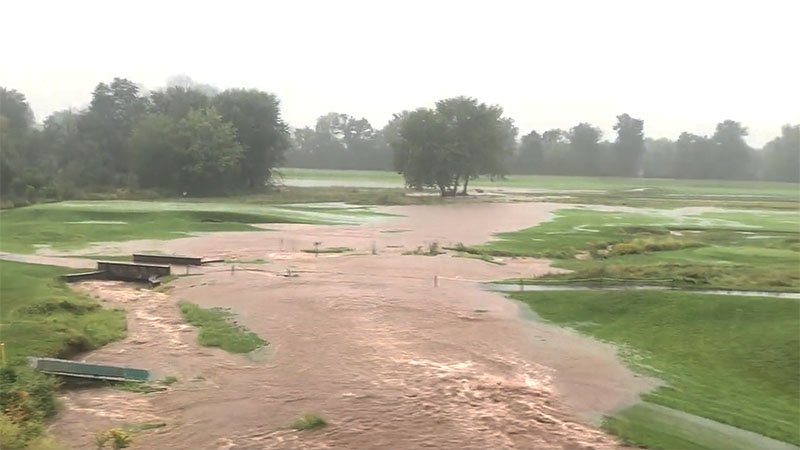It has been nearly two centuries since the Farmington River Canal was used as a navigable waterway.
The canal that once connected Northampton, Massachusetts with New Haven, Connecticut, was long ago converted to a rail line and later a series of trails. The canal, at least the part that goes through Farmington, Connecticut, was full again recently, when the area was hammered with 8 inches of rain in late September.
Among the areas affected was the Country Club of Farmington, a 100-year-old Devereaux Emmet design near Hartford that serves as a floodplain.
"I thought it might flood once every nine or 10 years, but this is the fourth time this year," said Farmington superintendent Scott Ramsay, CGCS. "This is unprecedented.
"There are 90 holes of golf in my area that are in a floodplain. We are the only country club. We are a pressure-relief area for farmers in the area downstream. The water rose so quickly, it overwhelmed the golf course. Hopefully, we were able to help protect buildings and farms downstream."
When the Farmington River, which is controlled with a series of dams, backs up, two creeks that run through the course overrun their banks and flood parts of the golf course.
We have excellent soils and excellent topography for golf. Excellent topography for golf once the water recedes.
A few days later, the creeks were back in their banks, but low-lying areas still were holding water on Oct. 3.
"The river doesn't crest on the golf course," Ramsay said. "It's the creeks and tributaries that back up.
"Most of the creeks were back in their banks yesterday, but low-lying areas are still full of water. Half the course is still closed."
The lowest areas on the golf course include the No. 6 fairway and area around the practice facility.
Emmett designed the course with flooding in mind. Greens and tees are elevated to where they mostly are out of harm's way.
Historic flooding and landforms such as ditches where the canal once was located have combined to help make Farmington a great golf course.

"This is a cool piece of property, and a phenomenal use of a floodplain," Ramsay said. "Where the Farmington River Canal was is just grassy knolls and swales now, but you can still see it.
"We have excellent soils and excellent topography for golf. Excellent topography for golf once the water recedes."
The course also has original bunkers that Ramsay and his team spend a lot of time rebuilding every time the course floods.
Farmington is in the midst of a restoration led by architect Matt Dusenberry. For reference, Dusenberry is using Emmett's original 1921 plans as well as aerial photos from 1934 to restore the course to its original design and playability.
"It's starting to look like a heathland golf course. It never was a parkland golf course, and it was never a links-style course."
I thought it might flood once every nine or 10 years, but this is the fourth time this year. This is unprecedented.
The project also includes tree removal, improving drainage and expanding greens contours to their original specs.
"We're getting the footprint back," Ramsay said. "We're going to wrap up this fall. Then I look forward to restoring the bunkers — and defending them from inclement weather."
In the long term, Ramsay would like to move more of the golf course out of the flood zone, but that will include getting an OK from local and state officials since and likely will also mean converting at least an equal amount of acreage to floodplain use since handling floodwater is the course's purpose.
"There are methods we could use to defend the golf course from the weather, like raising some fairways and diverting water elsewhere," Ramsey said. "It would be a big project, but I think we could raise fairways a quarter-acre here and there."

